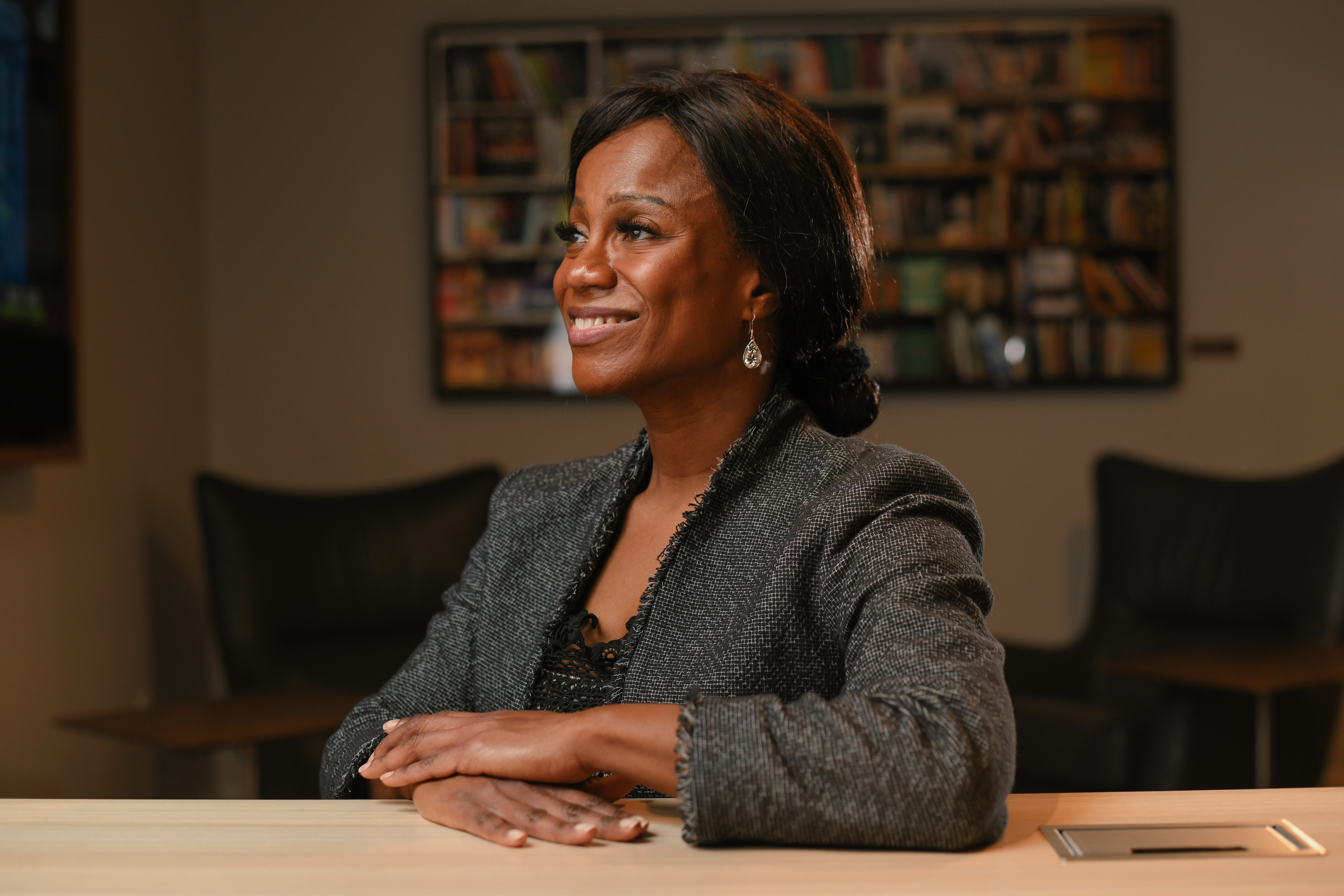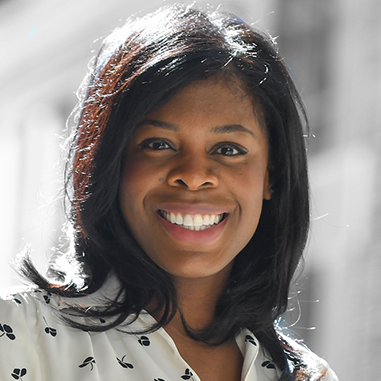Jun 11, 2020
On life, death, and pain
Coverage is proud to publish columns featuring the important perspectives of Black women physicians who belong to the Diva Docs network in Greater Boston. Today, Dr. Sharma Joseph, an anesthesiologist and critical care physician at Tufts Medical Center, shares her thoughts with Dr. Philomena Asante, leader of Diva Docs Boston and creator of the Diva Docs column series for Coverage.
When I was growing up, I had a real curiosity and desire to understand what it was my mother did when she left our home for her 12-hour nursing shift, wearing her hospital uniform. She eagerly shared stories of the patients for whom she cared, those she lost, and the wisdom imparted by those given a second chance at life. What I understood was that she carried heavy responsibility when she stepped into the transplant unit, often as the nurse in charge. Her work affected lives, and she was deeply passionate and fulfilled by it. I wanted that fulfilment too.

In high school, one of my science teachers who knew of my interest in health care shared information on a STEM program called the National Student Leadership Conference. One summer, I travelled to Philadelphia from my home in Montreal, Canada, and joined students from all over the U.S. and Canada for a two-week immersion course in medicine. I sat in on human anatomy courses and was amazed to see dissections of human hearts, lungs, and kidneys. I was granted access to medical students and academics from some of the leading medical institutions in the country. We discussed topics such as leadership, disparities, health care costs, medical ethics, and end-of-life care. I was granted insight into the prerequisites, application process, and training. Those weeks not only affirmed my interest in health care but made me realize I wanted to become a physician.
In medical school, I found that I enjoy an environment that is fast-paced and ever-changing. Most of anesthesiology is practiced in the operating room, which requires all practitioners to be on their toes. Anesthesiology demands a knowledge of internal medicine and an ability to think critically, to piece together puzzles and come up with solutions quickly. That combination spoke to me.
I chose to become a critical care anesthesiologist, working in the ICU as well as the operating room, because of the challenge and privilege involved in caring for the sickest patients in the hospital. Many don’t survive.
Taking care of ICU patients forces you to develop an appreciation for life and to not take time for granted.
The ICU also teaches you about death and dying with dignity. This is so important because a loved one’s death is the last memory provided to a family. It is critical for peace and closure.
Putting people to sleep for surgery is part of what an anesthesiologist does, but it’s a small part. Our role, first, is to make sure that patients are healthy enough to have surgery, and then, to determine how to help patients endure the physical stress of surgery. We also specialize in pain management, including pain that patients experience after surgery, while in labor, or chronically due to back injuries and cancer, for example.
Disparities in treatment
Studies show pain is often underassessed and undertreated in people of color. Women of color are less likely to have labor pain relieved with epidural catheters, across all levels of insurance and income. When in labor, black women may have their screams dismissed as “cultural” rather than a clear indication of pain that must be evaluated and addressed.
Many medical practitioners have a false belief that genetically, black people experience pain differently than white people do. What may be perceived as extreme pain in a white patient is not taken as seriously in a black person.
The racial and economic disparities in our society also can lead to unconscious bias. We know that if patients are struggling with food or paying rent, their focus is on surviving and not on health. They may end up in the hospital because they have been unable to afford prescribed medication or travel to medical appointments. Among providers who lack education about these issues, that may lead to a bias: “black patients don’t take care of themselves.” Those assumptions mean important conversations won’t be had. Resources will not be made available. This can lead to increased complications. And so the cycle continues.
A lack of diversity in the medical field is another important contributor to ongoing disparities. Only 3% of anesthesiologists in this country are black, a small fraction of the African-American population.
In the ICU, sometimes black families will pull me aside to have conversations, critical to the well-being of their loved one, that they haven’t had with anybody else. There is just an automatic connection and trust.
We also grapple with disparities in end of life issues. End-of-life and hospice care is less often offered to black patients than it is to white patients. This means the ability to manage pain, which can be a big problem at the end of life, is not addressed as well.
Important questions
Part of the way to address racial disparities in health care is by educating the public so they can become empowered to ask about the care that may be available to them or their loved ones.
There are three questions I recommend patients ask an anesthesiologist before surgery.
- First, how can I best prepare for the surgery? Should I stop smoking? Should I lose weight? What medications should I take or not take? Ideally that conversation will happen weeks in advance so the anesthesiologist can coordinate with your primary care provider, or connect you with a primary care provider if necessary. In general, before you have surgery, you want to get your blood pressure, cholesterol, diabetes, any lung issues or other medical problems under control. That will help minimize the stress your body undergoes and reduce the risk of complications.
- Second, what kind of anesthesia am I going to receive for the surgery? It’s important to understand the risks and benefits of, for example, general anesthesia, sedation, or an epidural. It’s important to share past experiences, for instance, whether you have vomited after prior surgeries, so the anesthesiologist can change their approach so it doesn’t happen this time.
- Third, what can I expect after the procedure? What pain level should I expect? Will there be any emotional or behavioral effect? For example, it’s important for parents to know that when children undergo anesthesia, their behavior may change dramatically for a short time.

The impact of COVID-19
COVID-19 has revealed the weakness in our health care system. We can see the disparities more clearly now than ever. COVID-19 has disproportionately sickened and killed Black Americans.
On a personal level, the pandemic has changed my experience of medicine. Never before have I walked into an ICU with every patient on a ventilator. The number of deaths in this pandemic is something that I have never seen.
While many COVID ICU patients are older, we have also admitted several young patients, and that has been distressing. I have taken care of teenagers and, just this past weekend, a 23-year-old. And they’re scared. You take on the role of that teenager’s or 23-year-old’s friend and parent because they are alone. You’re that person’s primary emotional support because family members are not allowed to see their loved ones in person.
I’m part of a small group of anesthesiologists who have been intubating, or placing breathing tubes, in COVID-19 patients. This has been stressful because of the high risk of exposure to the virus. There have been concerns about the availability of masks and other personal protective equipment. We have had to be inventive in devising new tools to keep ourselves safe so that we can continue to practice. Many of my co-workers have been sick with COVID-19, and there has been a tremendous amount of personal sacrifice throughout the pandemic. Many of my co-workers have been living in hotels or their garages to keep their families safe from infection.
The pandemic has given me a new appreciation for life, and for what we have, because in an instant, things can take a dramatic and unexpected turn.
It’s also given me a new appreciation for the importance of patient education and advocacy, which are key in addressing disparities.
If you have a family member in an ICU, call as often as you can. That helps you connect with the physicians caring for your family member. Now the clinician knows they have a spouse, or a sibling, or a child. They know that child’s name. They know what that person’s life was like before COVID-19. That person is now vivid in the clinician’s mind.
And don’t be afraid to say, “I don’t understand what you’re telling me.” And, “what are the consequences of either X or Y happening?” Asking questions is the best way to advocate for any family member that’s hospitalized, especially now.
Changes in medicine
The American Society of Anesthesiologists has started to pay attention to issues of bias. Anesthesiologists go through continuing medical education to maintain certifications, and bias is now being discussed as part of the curriculum. Residency programs have also demonstrated an interest.
Medical schools, medical societies, and health care institutions are also recognizing the need for a more diverse workforce, and the need to create pathways for promotion, so that leaders throughout medicine come from diverse backgrounds.
Building bridges between hospitals and their communities is one simple intervention that can help reduce disparities and bias, and improve health care. Educating health care providers about the communities they serve is also important. For example, if a hospital is in an area with a large black population, patients will present with sickle cell crises. That pain is real and needs to be treated.
The pandemic has starkly illustrated the racial disparities we have long known about. Now, it’s in our face and on paper and hard to deny. The question is, what steps do we take today? Because this is not going away. We have to take it upon ourselves to change our course.
PHOTOS BY FAITH NINIVAGGI

